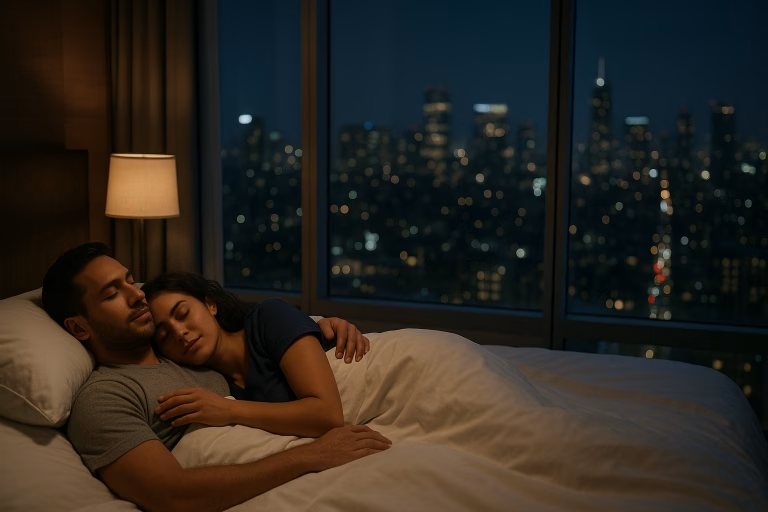
Understanding Allergy Relief and Why Oral Antihistamines Matter
Allergies are more than just a seasonal nuisance—they can significantly affect your quality of life. Whether it’s springtime pollen, dust mites hiding in your home, mold spores in damp areas, or pet dander from your favorite furry friend, allergens are everywhere. For millions of people, exposure to these triggers means dealing with an annoying and sometimes overwhelming set of symptoms: sneezing, itchy eyes, nasal congestion, runny nose, and even skin rashes or hives.
Fortunately, you don’t have to suffer in silence. Oral antihistamines are one of the most effective and accessible ways to get fast, reliable relief. These medications work by blocking histamine, a natural chemical your body releases during an allergic reaction. Histamine is responsible for those irritating symptoms—but by stopping it from binding to its receptors, antihistamines help reduce or eliminate your discomfort.
But not all antihistamines are the same. Some act quickly, while others provide long-lasting relief. Some are non-drowsy and ideal for daytime use, while others may help you sleep if allergies are keeping you up at night. There are even different generations of antihistamines—first-generation drugs like Benadryl may cause sedation, whereas second-generation options like Zyrtec, Allegra, or Claritin are more targeted and less likely to cause drowsiness.
In this comprehensive guide, we’ve rounded up the Top 10 Oral Antihistamines most recommended by pharmacists. You’ll learn:
- How each one works
- What makes them different
- Their pros and cons
- Potential side effects
- Helpful counseling tips to get the best results
Whether you’re looking for something non-drowsy for work, powerful relief for hives, or a safe daily option for long-term allergies, this guide will help you choose the right medication for your needs—based on real pharmacist recommendations.
Common Allergy Causes: Indoor vs. Outdoor Triggers and How to Avoid Them
Allergic reactions are your immune system’s way of responding to substances it mistakenly sees as harmful. These substances, known as allergens, can be found both inside your home and out in the environment. Knowing the difference between indoor and outdoor allergens can help you take better control of your symptoms and reduce flare-ups.
🌳 Outdoor Allergy Triggers
These allergens are typically seasonal and vary depending on where you live and the time of year:
- Tree Pollen – Common in early spring (oak, birch, cedar)
- Grass Pollen – Peaks in late spring to summer (Bermuda, ryegrass)
- Weed Pollen – Common in late summer to fall (ragweed, sagebrush)
- Mold Spores (Outdoor) – Found in soil, leaves, and mulch, especially after rain
✅ Prevention Tips for Outdoor Allergies:
- Check local pollen forecasts and stay indoors on high-pollen days
- Keep windows and doors closed, especially in the morning when pollen counts are highest
- Use a high-efficiency particulate air (HEPA) filter in your air conditioner
- Shower and change clothes after spending time outside
- Wear sunglasses and a hat to keep pollen out of your eyes and hair
🏠 Indoor Allergy Triggers
These allergens are present year-round and often more difficult to detect:
- Dust Mites – Thrive in mattresses, pillows, carpets, and furniture
- Pet Dander – Tiny flakes of skin and dried saliva from cats, dogs, and other furry animals
- Indoor Mold – Grows in damp areas like bathrooms, kitchens, and basements
- Cockroach Droppings – Can trigger asthma and allergy symptoms, especially in urban environments
✅ Prevention Tips for Indoor Allergies:
- Wash bedding weekly in hot water to kill dust mites
- Use dust-mite-proof covers on mattresses and pillows
- Vacuum regularly with a HEPA-filtered vacuum
- Keep humidity below 50% using a dehumidifier
- Bathe pets regularly and keep them out of bedrooms
- Fix any plumbing leaks and clean moldy surfaces with non-toxic cleaners
💡 Pro Tip: Indoor allergens tend to be constant, while outdoor allergens follow seasonal patterns. Tracking your symptoms can help identify whether your allergies are triggered indoors, outdoors, or both.
Common Allergy Symptoms: Signs Your Body Is Reacting to an Allergen
Allergic reactions can vary widely from person to person—and even from one day to the next. Some people experience mild, seasonal discomfort, while others deal with year-round symptoms or even life-threatening reactions. Understanding these symptoms helps you respond quickly with the right treatment, like oral antihistamines, to get relief.
Here’s a complete breakdown of the most common allergy symptoms grouped by body system:
👃 Nasal and Sinus Symptoms (Upper Respiratory)
These are often the first signs people notice, especially with seasonal or indoor allergies:
- Sneezing – Frequent, uncontrollable bursts triggered by allergens in the nose
- Runny nose (rhinorrhea) – Clear, watery nasal discharge caused by irritation
- Stuffy nose (nasal congestion) – Swelling of nasal passages makes it hard to breathe
- Postnasal drip – Mucus dripping down the back of the throat, causing a scratchy feeling
- Itchy nose and throat – A constant urge to scratch or rub inside the nose or back of the throat
📝 These symptoms are commonly associated with hay fever (allergic rhinitis).
👁️ Eye Symptoms (Allergic Conjunctivitis)
Allergens that come into contact with the eyes can cause:
- Itchy or burning eyes – Feels like sand or grit in the eyes
- Redness and irritation – Bloodshot appearance and inflammation
- Excessive tearing (watery eyes) – Reflex tears caused by histamine release
- Swollen eyelids – Puffiness due to inflammation or fluid buildup
- Light sensitivity – Discomfort when exposed to bright lights
📝 These symptoms often occur with outdoor allergies like pollen or grass.
🫁 Lower Respiratory Symptoms
When allergens reach the lungs, they can mimic asthma or worsen existing asthma:
- Persistent coughing – Especially at night or early morning
- Wheezing – High-pitched whistling sound while breathing
- Chest tightness – Pressure or discomfort in the chest
- Shortness of breath – Feeling like you can’t take a deep breath
📝 If you experience these symptoms frequently, you may have allergic asthma.
🧴 Skin Symptoms (Dermatologic Reactions)
Skin can also react to allergens directly or as a result of internal exposure:
- Hives (urticaria) – Raised, red welts that itch or sting
- Itchy skin – General irritation without visible rash
- Eczema (atopic dermatitis) – Dry, cracked, inflamed patches of skin
- Rashes – Red or inflamed skin, often after contact with an allergen
📝 Skin reactions may result from food allergies, medication allergies, or contact allergens like latex or detergents.
⚠️ Severe Allergic Reactions (Anaphylaxis)
This is a life-threatening emergency that requires immediate attention:
- Swelling of the face, lips, tongue, or throat – Can block airways
- Trouble breathing or wheezing – Due to swelling or bronchial spasm
- Rapid heartbeat or drop in blood pressure – Leading to fainting or dizziness
- Nausea, vomiting, or diarrhea – GI distress linked to systemic allergic reaction
- Feeling of doom or panic – Often occurs before collapse
🚨 If you suspect anaphylaxis, use an epinephrine injector (like EpiPen) and call 911 immediately.
✅ When to Take Action
- If you notice mild seasonal symptoms, oral antihistamines like Zyrtec or Claritin may be enough.
- If symptoms interfere with sleep, work, or quality of life, consider speaking with a pharmacist or doctor.
- If you ever experience breathing difficulty or facial swelling, seek emergency care immediately.
Top 10 Oral Antihistamines Recommended by Pharmacists
1. Cetirizine (Zyrtec)
Ingredient: Cetirizine HCl 10 mg
How it works: Blocks peripheral H1 receptors to prevent histamine-induced symptoms. Rapid onset of action within 1 hour.
What makes it special: Offers a strong balance between potency and minimal drowsiness.
Side Effects: Drowsiness, dry mouth, headache, fatigue
Counseling Points:
- Take once daily at the same time
- May cause drowsiness, especially when combined with alcohol
- Safe for both indoor and outdoor allergies
2. Loratadine (Claritin)
Ingredient: Loratadine 10 mg
How it works: Selectively blocks peripheral H1 receptors with minimal CNS penetration, reducing allergic reactions without causing sedation.
What makes it special: Great for daytime use due to its low sedative effects.
Side Effects: Headache, dry mouth, fatigue
Counseling Points:
- Best taken on an empty stomach
- Takes longer to kick in than cetirizine but lasts 24 hours
- Safe for long-term use
3. Fexofenadine (Allegra)
Ingredient: Fexofenadine HCl 180 mg
How it works: Inhibits histamine H1 receptors in peripheral tissues without crossing into the brain, ensuring non-sedating action.
What makes it special: Preferred for people who need to stay alert and active.
Side Effects: Nausea, dizziness, headache
Counseling Points:
- Avoid fruit juices 4 hours before and 2 hours after dose
- Do not crush or chew tablets
- Take with water for optimal absorption
4. Diphenhydramine (Benadryl)
Ingredient: Diphenhydramine HCl 25 mg
How it works: First-generation H1 blocker that crosses the blood-brain barrier, causing strong sedation.
What makes it special: Highly effective for acute allergic reactions and sleep aid.
Side Effects: Marked drowsiness, dizziness, dry mouth, constipation
Counseling Points:
- Avoid driving or machinery use
- Not intended for long-term daily use
- May be used in emergency allergic responses (e.g., hives, insect bites)
5. Chlorpheniramine (Chlor-Trimeton)
Ingredient: Chlorpheniramine maleate 4 mg
How it works: First-generation H1 receptor antagonist with central nervous system effects.
What makes it special: A budget-friendly option with fast symptom relief.
Side Effects: Drowsiness, dry mouth, irritability
Counseling Points:
- Take every 4–6 hours as needed
- Drink plenty of fluids
- May impair alertness; use caution with activities
6. Levocetirizine (Xyzal)
Ingredient: Levocetirizine dihydrochloride 5 mg
How it works: Potent, active form of cetirizine with faster onset and greater H1 receptor affinity.
What makes it special: Particularly effective for nighttime allergies and chronic urticaria.
Side Effects: Drowsiness, dry mouth, fatigue
Counseling Points:
- Take in the evening to reduce sleep disturbances
- Avoid alcohol and other sedatives
- Good for persistent, long-term allergies
7. Hydroxyzine (Vistaril, Atarax)
Ingredient: Hydroxyzine HCl or pamoate 25–50 mg (Prescription ONLY in the US)
How it works: Suppresses activity in key regions of the central nervous system while blocking H1 receptors.
What makes it special: Dual use for anxiety, pruritus, and allergic reactions.
Side Effects: Sedation, dry mouth, dizziness, confusion (especially in elderly)
Counseling Points:
- Prescription-only; use under medical guidance
- Take at night if sedation is problematic
- Not suitable for routine allergy use
8. Desloratadine (Clarinex)
Ingredient: Desloratadine 5 mg
How it works: Active metabolite of loratadine with a longer half-life and improved receptor binding.
What makes it special: Extended 24-hour relief with once-daily dosing and minimal sedation.
Side Effects: Sore throat, dry mouth, fatigue, muscle pain
Counseling Points:
- Ideal for chronic rhinitis and seasonal allergies
- May be taken with or without food
- Report unusual tiredness or dizziness
9. Carbinoxamine (Palgic)
Ingredient: Carbinoxamine maleate 4 mg
How it works: First-generation antihistamine with sedative and anticholinergic properties.
What makes it special: Available in liquid forms for pediatric use; effective in treating cold-like symptoms.
Side Effects: Drowsiness, dry mouth, irritability in children
Counseling Points:
- Useful for nighttime relief
- Monitor children for unusual behavior
- Avoid combining with other sedatives
10. Meclizine (Antivert, Bonine)
Ingredient: Meclizine HCl 25 mg
How it works: Blocks vestibular stimulation and H1 receptors; effective for motion sickness and vertigo.
What makes it special: Combines antihistamine action with anti-nausea relief.
Side Effects: Drowsiness, dry mouth, blurred vision
Counseling Points:
- Take 1 hour before motion exposure
- Avoid driving or operating heavy machinery
- Stay hydrated
When to See a Doctor for Allergies: Know When It’s Time for Professional Help 🩺
While many allergy symptoms can be managed with over-the-counter medications like oral antihistamines, there are times when you need to go beyond self-treatment. Allergies that become severe, persistent, or unpredictable may require a personalized plan from a doctor or allergist.
Here are signs and situations when it’s best to seek medical help:
😷 Your allergy symptoms aren’t improving with medication
- You’ve been using antihistamines regularly but still experience sneezing, congestion, or itching
- Your symptoms return quickly after taking medication or don’t respond at all
- You’ve tried multiple OTC options with no lasting relief
😴 Your allergies are interfering with sleep, work, or school
- You’re constantly waking up at night due to nasal congestion or coughing
- You feel exhausted, irritable, or unfocused during the day from poor sleep
- You’re missing important activities or underperforming at work or school
🤕 You have frequent sinus infections or ear problems
- You develop sinus infections repeatedly due to nasal swelling and blockage
- You notice facial pressure, postnasal drip, or green/yellow mucus often
- You experience ear pain, popping, or fluid buildup because of constant congestion
🫁 You show signs of asthma or breathing difficulty
- You hear wheezing sounds when breathing, especially at night or after physical activity
- You feel tightness in your chest during allergy seasons
- You’re using a rescue inhaler more often, or experiencing allergy-induced asthma attacks
🚨 You’ve had a severe allergic reaction (possible anaphylaxis)
- You had swelling of the lips, tongue, face, or throat after exposure to a known allergen
- You felt dizzy, faint, or had difficulty breathing after eating certain foods or taking medications
- You needed emergency care or were given epinephrine (EpiPen) in the past
🔬 You want to identify your specific triggers through allergy testing
- You’re unsure if your symptoms are from pollen, mold, pets, food, or something else
- You want to know exactly what to avoid, especially before traveling or moving to a new area
- Your symptoms change throughout the year, making it hard to manage on your own
💉 You’re interested in long-term treatment options like immunotherapy
- You’re tired of taking daily medications or experiencing side effects
- You want to reduce your body’s reaction to allergens over time
- You’re considering allergy shots or sublingual tablets to build tolerance
🧠 You have other health conditions affected by allergies
- You suffer from eczema, chronic sinusitis, nasal polyps, or allergic asthma
- Your existing conditions worsen when allergies flare up
- You need a coordinated treatment plan that considers your whole health
👶 You’re treating a child with allergy symptoms
- Children can’t always describe what they’re feeling, so professional evaluation is important
- You notice ongoing runny nose, coughing, or skin rashes
- You want safe and age-appropriate medications for long-term use
Talking to a healthcare provider can help you get a clear diagnosis, find the best treatment, and prevent complications from unmanaged allergies. They may recommend stronger prescription medications, allergy testing, or a referral to an allergy specialist.
Lifestyle Changes for Allergy Relief: Simple Habits for Healthier, Symptom-Free Living 🌿
While medications like oral antihistamines can help control allergy symptoms, making small changes to your daily habits and home environment can greatly reduce your exposure to allergens—and improve your quality of life. These practical lifestyle tips work best when combined with the right treatment plan.
Here are smart and simple ways to manage allergies naturally:
🏠 Keep your indoor air clean and allergen-free
- Use a HEPA air purifier in bedrooms and main living areas
- Keep windows closed during high pollen seasons
- Run an air conditioner with a clean filter instead of using fans that bring in outdoor air
- Regularly dust surfaces and vacuum with a HEPA-filtered vacuum cleaner
🛏️ Reduce dust mites in your bedroom
- Wash sheets, pillowcases, and blankets in hot water every week
- Use dust-mite-proof covers on mattresses and pillows
- Remove carpets and heavy drapes if possible, especially in bedrooms
- Keep indoor humidity between 30–50% to prevent mold and mite growth
🐶 Manage pet-related allergens
- Bathe pets regularly and brush them outdoors
- Keep pets out of bedrooms and off upholstered furniture
- Wash pet bedding and toys weekly
- Consider using allergen-reducing sprays on pet fur (with vet approval)
🧼 Mold-proof your home
- Fix leaky pipes and dry damp areas promptly
- Use a dehumidifier in basements, bathrooms, and laundry rooms
- Clean bathroom tiles and shower curtains regularly with mold-killing cleaners
- Avoid indoor plants that hold moisture and attract mold
🌸 Limit outdoor allergy exposure
- Check daily pollen forecasts and stay indoors on high-count days
- Wear sunglasses and a hat when outside to protect eyes and hair from pollen
- Shower and change clothes after spending time outdoors
- Mow the lawn regularly or have someone else do it if you’re sensitive to grass
🥗 Boost your immune system with healthy habits
- Eat a well-balanced diet rich in fruits, vegetables, and omega-3s
- Stay hydrated to help flush allergens and keep mucus membranes moist
- Get regular exercise to improve lung function and reduce inflammation
- Prioritize sleep to support your body’s natural defenses
🚭 Avoid irritants that worsen allergies
- Don’t smoke and avoid exposure to secondhand smoke
- Limit the use of strong perfumes, scented candles, or air fresheners
- Choose hypoallergenic cleaning products without harsh chemicals
Taking charge of your environment and daily routines can make a big difference in how often and how severely you experience allergy symptoms. Pairing these tips with the right oral antihistamine can lead to long-term relief and a healthier, happier life.
Final Thoughts: Choosing the Right Oral Antihistamine for a Better Life 🤧💊
Allergies don’t have to control your life. With the right oral antihistamine, simple lifestyle changes, and a better understanding of your triggers, you can manage symptoms and feel better every day.
Here’s a quick recap to help you make the best decision:
🩺 Choose the antihistamine that matches your needs:
- Zyrtec (Cetirizine) – Fast-acting and powerful, great for day or night
- Claritin (Loratadine) – Long-lasting, non-drowsy relief for mild to moderate symptoms
- Allegra (Fexofenadine) – Ideal for staying alert and active
- Benadryl (Diphenhydramine) – Best for nighttime use or sudden reactions
- Xyzal (Levocetirizine) – Stronger nighttime relief with minimal sedation
- Other options – Ask your pharmacist about prescription-strength or dual-purpose options like Hydroxyzine or Desloratadine
✅ What to consider before choosing a product:
- How often you experience allergy symptoms (daily, seasonal, occasional)
- Whether you need a non-drowsy formula for daytime use
- If you suffer from asthma, skin allergies, or hives
- Possible side effects and how they affect your daily routine
- Other medications or health conditions that may interact with your choice
🧼 Don’t rely on meds alone—build an allergy-friendly lifestyle:
- Keep your home clean and allergen-free
- Avoid known triggers (pollen, pets, mold, dust)
- Eat healthy, stay hydrated, and support your immune system
- Track your symptoms to notice patterns and adjust as needed
📞 When to seek help:
- If OTC medications don’t work or cause unwanted side effects
- If symptoms become severe, chronic, or affect your breathing
- If you’ve had a serious allergic reaction in the past
- If you’re interested in long-term solutions like allergy testing or immunotherapy
Managing allergies is not just about taking a pill—it’s about understanding your body and making smarter choices every day. With the right approach, you can breathe easier, sleep better, and live more comfortably—season after season.
Helpful Links
#Hashtags
#AllergyRelief #OralAntihistamines #Zyrtec #Claritin #Allegra #Benadryl #PharmacistRecommended #SeasonalAllergies #HivesTreatment #OTCMedicine #AllergyTips #NonDrowsyRelief #AllergyMedications #AntihistaminesGuide #HealthyLiving










